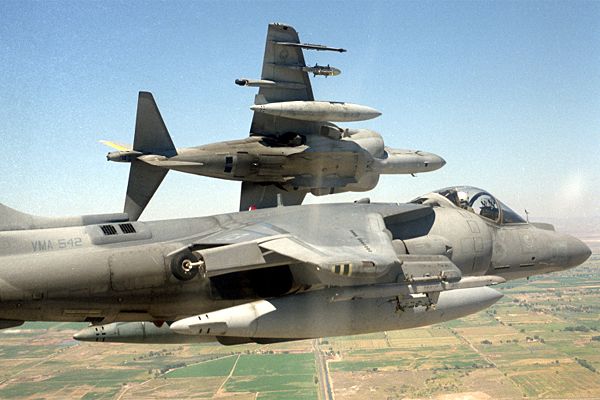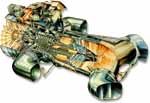 Back to the Purdue AAE Propulsion main page.
Back to the Purdue AAE Propulsion main page.
 Back to the Advanced Jets page.
Back to the Advanced Jets page.

Several versions exist. The original BAe Harrier has several derivatives, including the naval Sea Harrier. The Harrier has proven quite effective as a naval aircraft. Its V/Stol capability means it needs little space compared to conventional aircraft, and it still has great speed and payload capacity advantages over helicopters. The Harrier is built under license in the United States by McDonnel Douglas for the Marine Corps, who rely heavily on its versatility.
What gives the Harrier its capability is its thrust vectoring. Remarkably, there is no computer control of the nozzles. This means the Harrier has a fatally high learning curve, which has meant heavy losses over the years, but those who get through training are the best and most capable pilots in the world.

| Specification | Pegasus 11-61 |
|---|---|
| Application | Harrier |
| T/O Thrust | 23,800 lb |
| T/O SFC | 0.76 |
| Cruise Thrust | |
| Cruise SFC | |
| Bypass Ratio | 1.2 |
| Max pwr. pressure ratio | 16:1 |
| Length (in) | 137.2 in |
| Dia (in) | 48 in |
| Weight | 4260 lb |